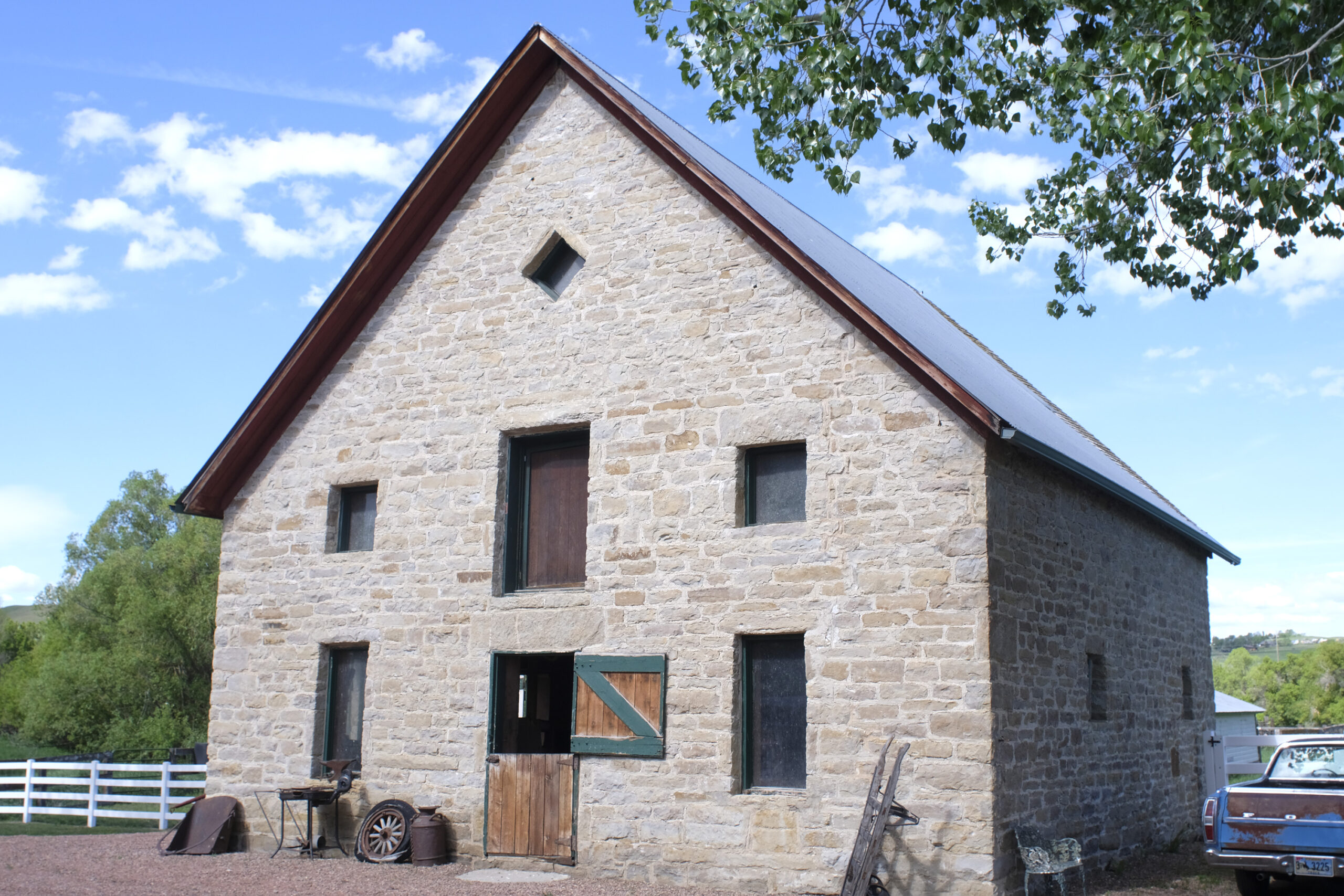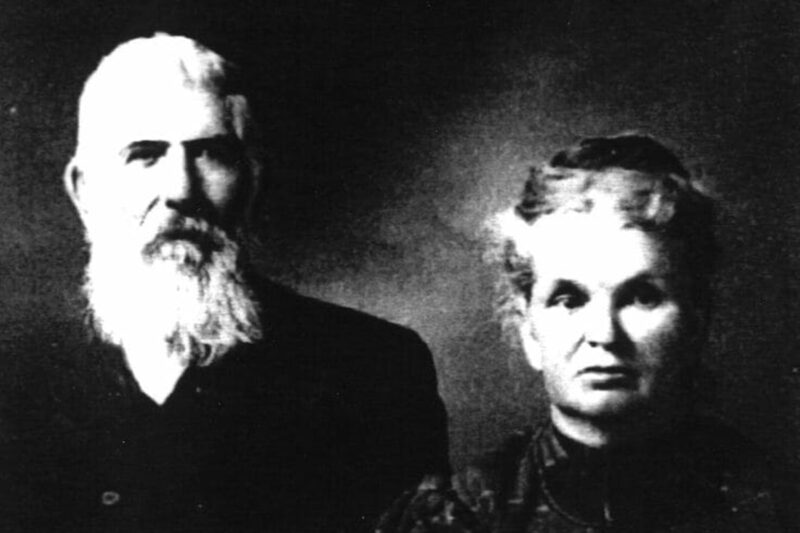
First Historical Easement in the State of Wyoming
The Sheridan Inn is a historical treasure to Sheridan, Wyoming and the building represents a rich local history and western legends. The Sheridan Inn is the first historical easement in the State of Wyoming. The Sheridan Community Land Trust (SCLT) and the Sheridan Heritage Center Inc. signed the easement on December 11, 2008, which gave SCLT preservation oversight. The preservation easement agreement includes exterior and interior historical features.
The Sheridan Inn is a 145-foot-long, three-story, L-shaped structure that was designed by Thomas Rogers Kimball, an architect of Omaha, Nebraska. As a master designer, Kimball was known for many prominent buildings, such as the Nebraska capitol. Kimball’s plan for the Sheridan Inn was modeled after Scottish hunting lodges and inns that he had previously visited. Construction of the inn began in December 1892 and was completed in May 1893. A very mild winter with very little snow allowed the Sheridan Inn to be built in six months. The inn opened June 18, 1893.
The site of the Sheridan Inn is 1.5 acres. The landscape is dominated by large cottonwood trees and it is noted that these trees were brought from the banks of Little Goose Creek in 1894. Sheridan County is part of the eastern slope of the Bighorn Mountains. This land has supported several cultures before the railroad arrived. Tribes in the Northern Plains include Shoshoni, Sioux, Arapaho, Cheyenne and Crow. The Crow, called the Apsáalooke in their own Siouan language, have historically lived on the land that extends from present-day Wyoming, through Montana and into North Dakota, south of the Missouri River.
In 1885, prime land sold for $1.25 acre in the Sheridan area. Mr. Samuel M. Rhodes of Oregon originally purchased the land on which the Sheridan Inn is built. Mr. Rhodes paid a total of $200. for the 160 acres patent filed on August 19, 1885. This 160 acres patent is from the Homestead Act of 1862 that allowed the settlement of public land in the west. Records indicate no living member of the Rhodes family lived on or occupied the land. Mr. Rhodes sold the 160 acres on November 2, 1887, for $1,500. to Horace C. Alger. Then in the same year, Alger sold a two-thirds interest to Cornelius H. Grinnell, who was a business partner of Omaha railroad executive George Holdrege and Edward A. Whitney, a local banker, for $1,050. In February 1892, the Highland Land Company was formed by Mr. Alger, Mr. Whitney and Mr. Grinnell. They incorporated the same year and added Clara S. Grinnell to the partnership. The Highland Land Company were also investors in the Sheridan Land Company that incorporated on August 18, 1892.
In 1888, the Northern Pacific Railroad made a final decision to have a station in the town of Sheridan. A civil engineer, Edward Gillette, began surveying the line into Sheridan and by 1890 the real estate values of the town of Sheridan doubled. The Chicago, Burlington, and Quincy Railroad was completed by November 1892 and the construction of the Sheridan Inn was an extension of the railroads development program for Wyoming. The Sheridan Inn was a mutually agreeable business and was financed for the cost of the construction of $25,000. by Burlington and Missouri Railroad and the newly incorporated Sheridan Land Company. The railroad skirted what is now downtown Sheridan. The adjacent placement of the inn to the railroad depot offered hospitality to many distinguished guests and traveling families. Today, this area is known as Sheridan Downtown Historic District.
The Sheridan Inn represents the establishment of modern culture in areas that were still considered “wild and wooly” prior to the coming of the railroad. When the Sheridan Inn opened in 1893, it was said by many to be the finest hotel between Chicago and San Francisco. The Sheridan Inn is credited with having had the first bathtubs and electric lights in this part of Wyoming. Running water was provided to the whole building from a well in the basement. A gravity-based system carried the water from the tank room on the third floor to the bathrooms below. Another modern convenience for the time period was every room had steam heat piped into them. Later, The Sheridan Inn was the first to have a coal stoker that provided heat for the building.
Perhaps the inn’s greatest accoutrement was electricity. The Sheridan Inn was the town’s first building illuminated by electricity. A discarded threshing machine engine was turned into a dynamo that powered 156 lights, which were scheduled to turn on at dusk and off at midnight. Mr. F.J. Pierson, an expert electrician, arrived May 14, 1893, from Omaha. He was under contract to install the electrical system with a finish date of May 28th, but he finished the electrical job a day earlier. When it came time to flip the switch, hundreds gathered at the inn to witness the historic event. Many of the community members had not seen electricity in use before and spread demand for this modern convenience across the growing.
Kimball’s architectural design housed 64 bedrooms that are located on the second and third floors under a gambrel roof. Each bedroom has its own dormer window and there are a total of 69 dormers. The second floor dormers have shed roofs and the third floor dormers have gable roofs. A shed roof has a single slope and can vary in steepness. The gable roof is usually a triangular portion of a wall between the edges of intersecting roof pitches. With these intersecting roof pitches, the third floor windows have a distinct curvature feature of the interior ceiling around the window area. These aesthetically pleasing dormers were not only part of Kimball’s unique design plan, but also acted as a safety feature and method of fire escape from each guest room. The gambrel roof gradually melted into the slope of the porch, the roof is also an architectural feature that supports a safe fire escape route from the dormers for this time period.
Other exterior architectural features that have an unusual feature is the porch construction. The floorboards slope very gently to the outer edge of the porch so that rain water will drain off. The porch is 14 feet deep and the deck is constructed of white pine with eigh-by-eight wooden posts with covered corbel brackets. The rest of the exterior of the inn is covered with clapboard.
The Sheridan Inn houses the famous Buffalo Bill Saloon. Colonel William F. Cody, better known as Buffalo Bill, special ordered a bar from England constructed of oak and mahogany. It is assumed that Buffalo Bill had it built during the beginning stages of the construction of the inn and the installation of the bar was closer to the end of the construction period. With no official shipping paperwork archived of the shipping of the bar from England to Wyoming, the bar was probably shipped in sections and traveled by railroad from the East Coast to Gillette, Wyoming. Then the bar was hauled 110 miles to Sheridan by an ox-drawn wagon. According to Western lore, Buffalo Bill was involved with the Sheridan Inn since the grand opening where he led the grand march for the opening dance.
Other first floor historical interior features include the registration desk and mail box receptacles in the main lobby as well as the exposed wooden beams in the main dining room, lobby and the bar area. In addition, the three stone fireplaces that are located in the main lobby, ladies parlor and the main dining room are part of the preservation easement. During the 1968 renovation by Neltje, the entrance to the ladies parlor and the dining room were altered. The original floor plan of the ladies parlor coincided with specific social standards of men and women from the 19th Century, which stayed into effect well into the 1920s for the Sheridan Inn. It was unacceptable for women to join men in the main lobby area of the inn and the space behind the registration desk where the saloon was located. These two main spaces were considered the “domain of men.” The ladies parlor located down the hall from the main lobby and the Buffalo Bill Saloon is the room where ladies gathered for their conversations and for formal introductions. The ladies parlor had its own outside entrance on the east side of the porch. This gave women access to the building without entering the main lobby. The interior door of the ladies parlor was originally located to the left side of the stone fireplace and allowed women access to walk down the hall into the dining room. There was a staircase which was opposite of this interior door and this enabled ladies to walk to and from the parlor and their room. Moving forward from this time period, Neltje’s 1968 renovation brought the needed space for larger social gatherings and the inn again became a center of community events.
Today, visitors of the Sheridan Inn can enjoy the aforementioned historical exterior and interior areas architectural features with the local western lore. Preservation is a physical reminder of a shared past and plays a critical role in defining and reinforcing our unique Wyoming identity as well as providing visual enjoyment. Public and private property owners work with Sheridan Community Land Trust to permanently preserve and interpret significant historic structures and sites. Preserving historic places and sites maintain and enhance our region’s character and economy. To view historical images that range from the 1900s to 1965 visit the Library of Congress Photo, Print, and Drawing web-based gallery.
SOURCES
Atkins, Patti, Reflections of the Inn: Historic Sheridan Inn, House of 69 Gables.Hawks Press Wyoming, 1994
Prepared by Community Service Collaboration for Sheridan Heritage Center, Sheridan Inn, Sheridan, Wyoming. December 30, 1992.






